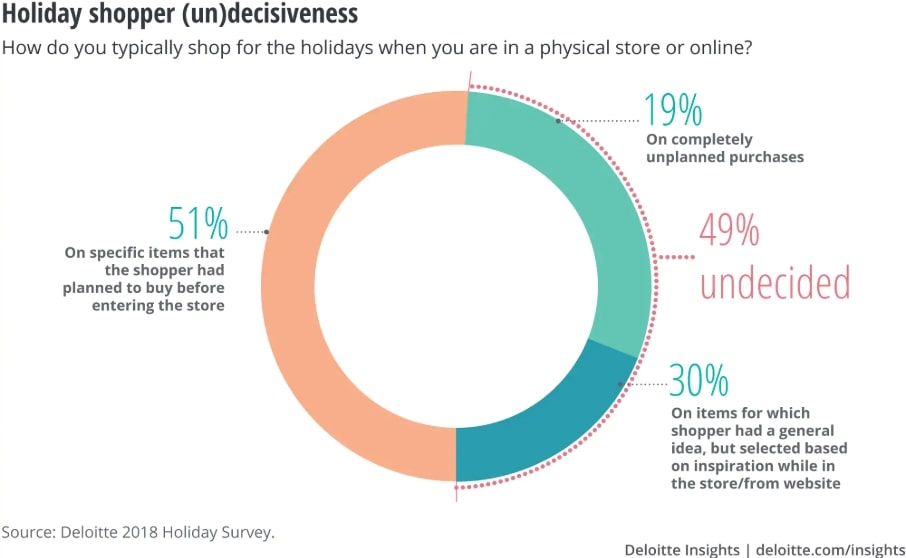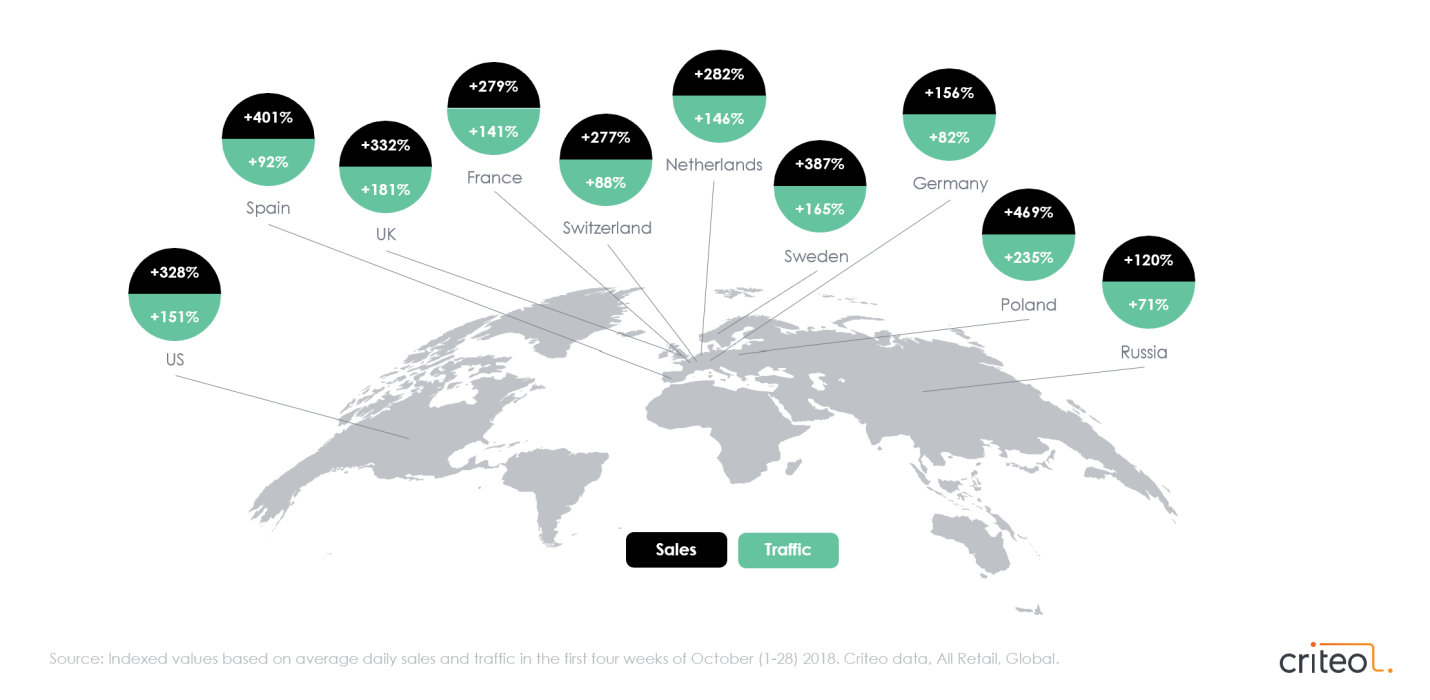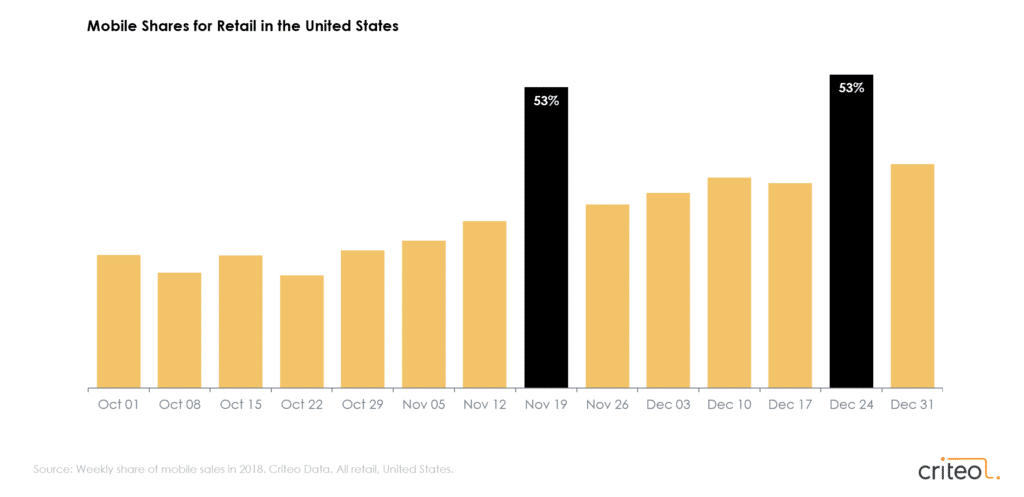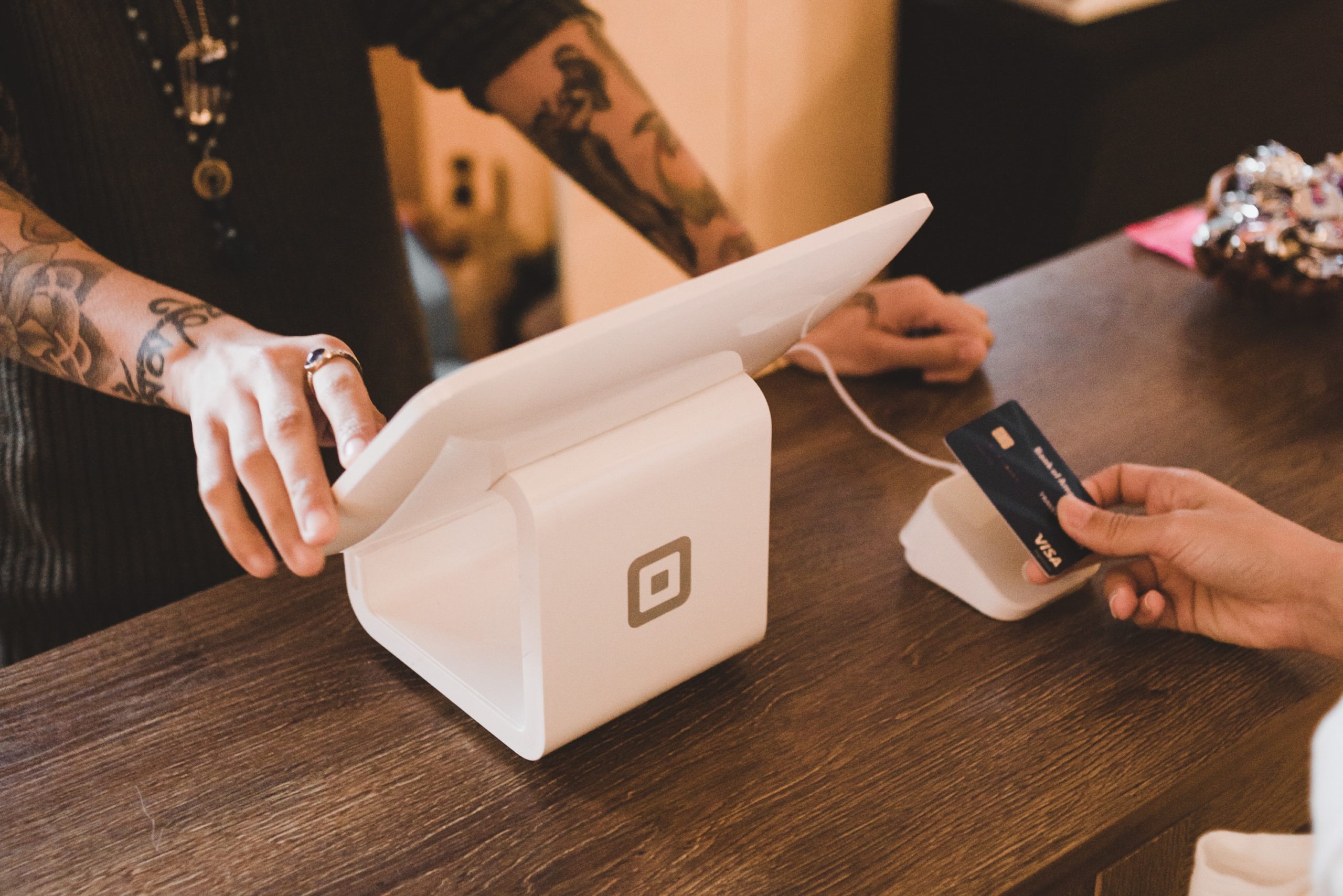

Quick Links
Quick Links

What to Expect, How to Prepare, and Who the Winners Will Be
The holiday shopping season is just around the corner. This year, the expectations for eCommerce holiday shopping are higher than ever before. There are a lot of factors contributing to the growth in forecasts and predictions, so we’ll dive into what to expect, how to prepare, and who will be the big winners this year.
Contributing Holiday eCommerce Factors
First, the continued upward trend in mobile and internet expansion has paved the way for an ever-growing number of people to shop online.
Second, eCommerce stores have skyrocketed in number, in large part because it is easy for anyone to start an eCommerce business. Online store platforms like Shopify and BigCommerce—not to mention marketplaces like Amazon and eBay—now allow a single person to operate an online store.
Third, eCommerce payment gateways have allowed for new and easier payment processing, easing payment and service delivery.
All told, the expectations of holiday shopping have increased over past years.
Holiday eCommerce by the Numbers
You may or may not be surprised to learn that most eCommerce businesses get a large percentage of their annual revenue during the two-month holiday period (November/December) alone. The increased shopping activity during this period leads eCommerce businesses to market their products more aggressively and implement other proven tactics to maximize revenue.
But how much do they earn? What are the sales numbers for eCommerce stores like during the holiday season? And how much do shoppers spend during this season? Let’s look at the numbers from 2018 and then look ahead to the 2019 eCommerce holiday season.

2018 Holiday Season Overview:
- Each online shopper spent an average of $313, making total sales reach $126 billion.
- Around 168 million people shopped online during the holiday season.
- An average shopper bought around 16 items during the holiday season.
- Black Friday was the busiest eCommerce day.
- Fashion apparel, toys, electronics, and accessories were the biggest sellers during the holiday season last year.
- Amazon captured 40% of the total eCommerce sales during the holiday season.
- Almost 39% of online shoppers started shopping for items around the beginning of November.
- 61% of shoppers bought their last gifts during the Christmas holidays.
- Sales and advertising promotions influenced 65% of holiday shopping.
Source: Website Setup
That was the sum-up of the eCommerce holiday season of last year. But it has some important messages for eCommerce store owners who are trying to get more market share for 2019:
- Proper product advertising and promotion make a difference.
- Discounts are a top tactic for attracting buyers.
- Knowing your audience and where they spend time online is vital.
- Being on Amazon can expose you to new customers.
You can find experts in eCommerce marketing and promotion to help you with all of this on the FreeUp marketplace.
Worldwide eCommerce Growth

Criteo, an advertising platform, compiled data about countries and how much sales volume and traffic they received during the holiday season in 2018. Traffic in the US increased by 151% while sales jumped by 301%. In emerging markets like Spain, Poland, and Germany, there was about a 200% increase in traffic and sales jumped by 300%.
eCommerce sales during the holiday season are continuing to grow each year thanks to improved technology and better access around the world.
Offline vs Online and Mobile vs Desktop
According to BigCommerce, US-based customers alone spent $1 trillion during the 2018 holiday season. That’s broken down by $123 billion that was purchased online and $874 billion purchased offline. So while eCommerce continues to grow, brick-and-mortar still rules the retail world.

Except during Black Friday and right around Christmas, desktop purchases outpaced mobile purchases.
As you look ahead to 2019, make sure you optimize the shopping experience for your eCommerce store on both desktop and mobile.
Expectations: What Will the 2019 Holiday Season Bring?
In general, the trends witnessed in 2018 are expected to continue for the 2019 holiday season.
More Mobile Shopping
It is expected that the share of mobile purchases will increase significantly for 2019. Last year, the percentage of mobile purchases was under 50%, and this year it is expected that mobile shopping will be around 65% during the 2019 eCommerce holiday.
Paid Marketing Plays it Big
During the holiday time, paid ad impressions can increase by as much as 350%. This happens as more shoppers search gifts for others and themselves.
Some of the top paid marketing channels include Google AdWords, Facebook ads, Amazon ads, and Twitter ads.
Hit the Inbox
Email marketing in eCommerce has one of the highest returns on investment (ROI)—and that’s amplified during the holidays. On Black Friday and Cyber Monday, shoppers will be tied to their inboxes, even if they’re at work, looking for the best deals. Send offers that can’t be refused to your list throughout the holiday shopping season.
Preparations: What Not to Miss Out During the 2019 Holiday Season
Store owners need to be prepared to make the most of the holidays. It takes planning ahead to make the most of the increased holiday shopping volume. This means offering more discounts, promoting offers through social media and search engines, and forming partnerships with other similar stores or product manufacturers. A few things store owners should focus on include:
Cart Optimization

Cart issues can lead more users to leave your eCommerce store. The poorer your cart is, the more users will leave, decreasing your revenue. So before the big holiday push, take time to optimize your cart functionality. A few things you can do to optimize your cart are:
- Decrease the number of steps people take to order a product on your store.
- Add guest checkout to your eCommerce store so visitors don’t have to create an account when they buy from your store.
- Add upsell and cross-sell options to your checkout cart and make it as easy as possible for people buy more products as they order.
Site Speed
Site speed plays a crucial role in increasing website performance. If your eCommerce store is fast, visitors will be more likely to stay. If your site is slow and takes even several seconds to load, people will leave and find another store to get what they were looking for.
- Test your eCommerce store speed with GTMetrix and Pingdom.
- Add relevant cache plugins and extensions to improve the speed of your eCommerce store.
- If you have to make changes to your hosting infrastructure, do so before the start of the holiday season to avoid store downtime.
Improve User Journey

An often-overlooked way to increase sales is by improving the user journey. Instead of confusing the visitors or overwhelming them with thousands of products, create a simple landing page that they can shop from. Most eCommerce stores have deals or discounts pages where they have the latest products available. Your ads, emails, and promotions can direct shoppers to these optimized pages.
Improve the user journey by:
- Building landing pages to get customers to directly order products.
- Decrease the number of steps needed to order a product.
- Improve search functionality on the store with smart search plugins or extensions.
Upsell Additional Products
According to Econsultancy, upsells are 20 times more effecting than cross-selling. Experts like Ezra Firestone recommend store owners add the upselling feature to their cart pages so customers are more inclined to buy more products and more of each product.
Cross-Device Experience

Finally, make sure that the website is accessible through all platforms (i.e., desktop, mobile, and tablet). Implement technology that allows your site to track and optimize the experience for visitors through their multiple devices.
Going Outside Your Site
These recommendations apply to your Word press, Shopify, Bigcommerce or other owned eCommerce store. But you may also sell products on Amazon, Walmart, eBay, Etsy or other eCommerce platforms. If you sell on Amazon, here are 21 tips for 2019 holiday success.
What days are the Biggest Earners?
Although the last two months of the year are called the holiday season, there are just a few days that bring in most of the revenue. If you’re a US consumer, these trends won’t surprise you.
Black Friday
Most people make impulse purchases during the holiday season. During Black Friday, the impulse purchases increase because almost everyone is trying to get their hands on the biggest discounts. Unsurprisingly, companies usually slash the prices of their prices by 20% to 30% and even more during the holiday season.
Cyber Monday

Cyber Monday is another great day for shopping during the holiday season. It has beaten even Black Friday in sales during 2016 and 2017. In 2017, Cyber Monday sales were around $6.5 billion while that same year Black Friday sales were around $5.9 billion.
Christmas
The Christmas season runs from December 21st to 28th. During Christmas week, according to Deloitte, US customers spend over $1500 each on their shopping. They usually buy around 10 to 15 gifts on average.
New Year
Experts have said that New Year and Christmas have become Cyber Week II. This is because more people are now purchasing products during this time. Shoppers are looking to redeem their gift cards and find great after-season deals.
How Will Amazon, eBay, and Walmart Perform?

Amazon is a clear winner when it comes to the eCommerce holiday season. This is in part because of Amazon’s strategy to launch and market its products around peak seasons. Last year alone, Amazon launched its voice devices, the Amazon Echo, during the holiday season and broke its own sales record. Amazon also recently launched the Black Friday deals page for all those who would like to find the best deals during the holiday season.
Luckily, Amazon lets other sellers get in on the holiday sales boom from their massive existing customer base. As a seller, you can place your products for sale on Amazon in addition to on your own site to tap into a small percentage of that market.
Since Amazon has its AWS cloud hosting, it doesn’t have to worry that the store will experience downtime during a traffic surge. This is one problem that Walmart still has. Walmart experienced downtime during the holiday season in 2017. This was because of a huge traffic influx and most people who were buying from Walmart had a bad experience. Walmart lost millions of dollars in sales during that snafu. Since then, Walmart has implemented safety measures and has remained online consistently, so it’s optimistic about its performance during the 2019 eCommerce holiday season.
eBay is one of the largest eCommerce sites, but it isn’t a global marketing platform like Amazon or Walmart. This is because eBay doesn’t have its own products like the others. eBay is solely community-driven and sells used items and collectables in addition to new products. eBay doesn’t attract as much attention during the holiday season, but it does see a significant increase in revenue, especially Black Friday and Christmas.
Amazon has been and is expected to continue to be the clear winner during the 2019 holiday season. It has 108 million prime users who mostly buy from Amazon whether it is the holiday season or not. Amazon doesn’t reveal its official sales statistics publicly, so it is hard to tell how much it actually earned during black Friday last year. But they did report that the sales on Black Friday exceeded both Cyber Monday and Christmas.
Conclusion
Now that you know what to expect for the holiday season, you can finalize preparations for strong eCommerce sales performance. You know the holiday season trends, how to prepare, and who are going to be the winners this year.
For help finalizing your holiday eCommerce strategy, get help from an eCommerce expert on the FreeUp marketplace.
